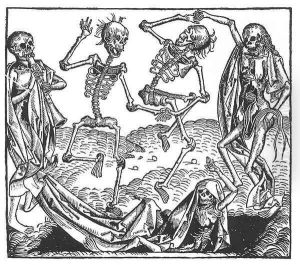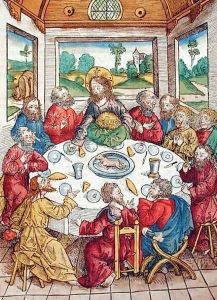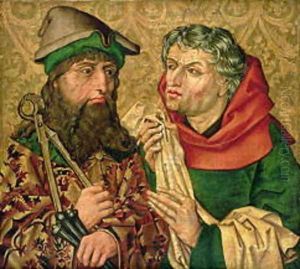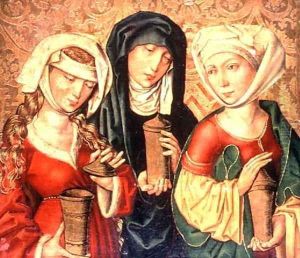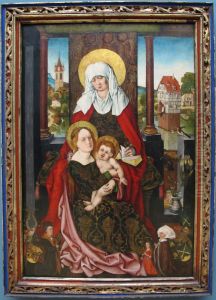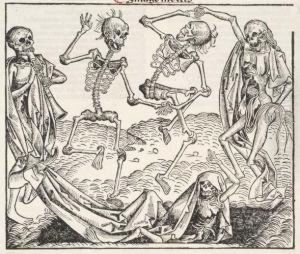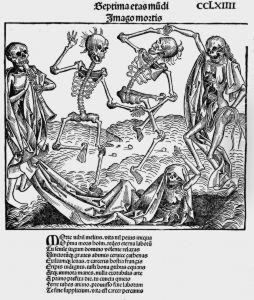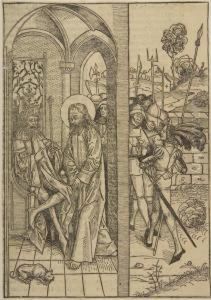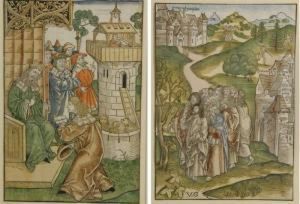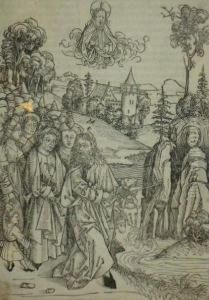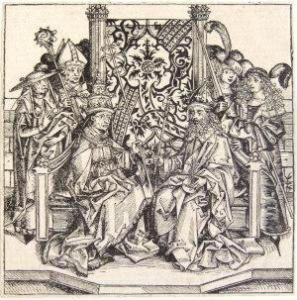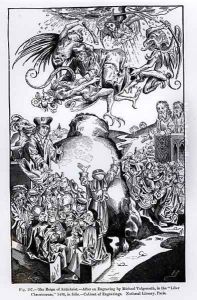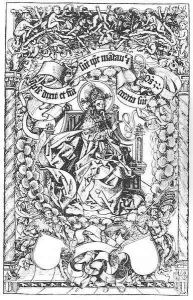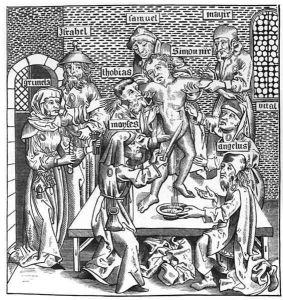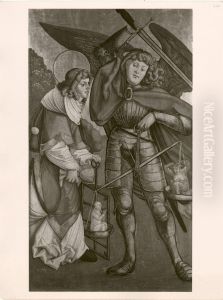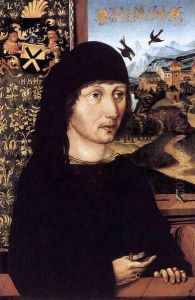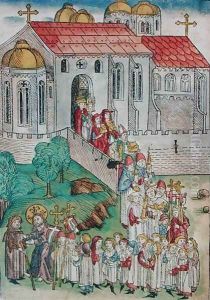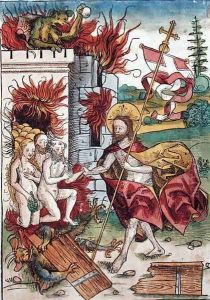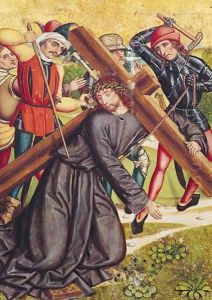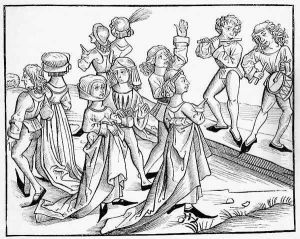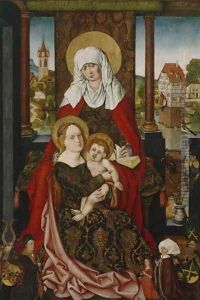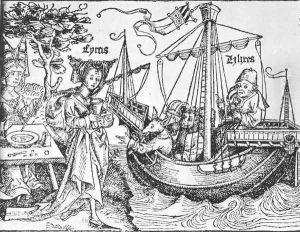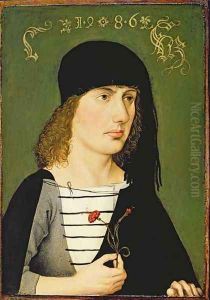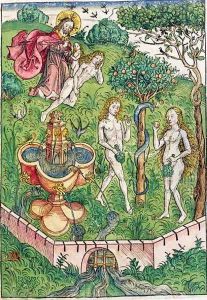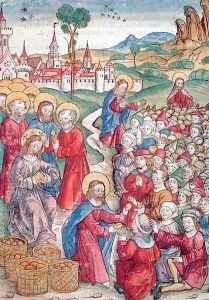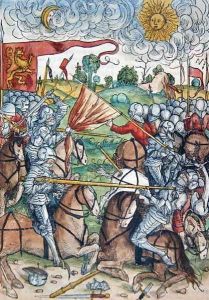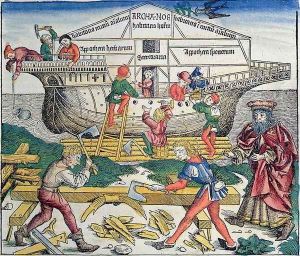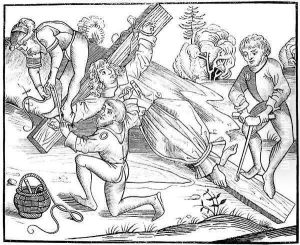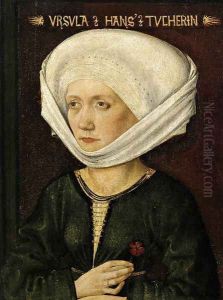Michael Wolgemut Paintings
Michael Wolgemut was a notable German painter and printmaker, born in 1434 in Nuremberg, a city which was then a thriving center for arts and craftsmanship. Wolgemut's work bridged the late Gothic and early Renaissance styles in Germany. He ran one of the most prominent workshops in Nuremberg and is particularly known for his significant contributions to the development of the woodcut and his influence on the young Albrecht Dürer, who was an apprentice in his workshop from 1486 to 1489.
Wolgemut's early training is not well documented, but he is thought to have been a pupil of the painter Hans Pleydenwurff. He traveled extensively around Germany, which exposed him to a wide range of artistic styles and techniques. By 1472, he had settled in Nuremberg and established his own workshop. There, he produced a variety of artworks including altar pieces, religious panel paintings, and portraits, which were highly sought after by the churches, town halls, and wealthy patrons of the time.
Perhaps Wolgemut's most renowned work was the woodcut illustrations for the 'Nuremberg Chronicle' (also known as 'Schedelsche Weltchronik'), published in 1493. This ambitious project was one of the earliest and most lavishly illustrated books of the time, depicting historical events, figures, and city views. Wolgemut's workshop produced over 600 woodcut illustrations for the chronicle, which showcased his mastery of the medium and his workshop's ability to undertake large-scale commissions.
In addition to his woodcuts, Wolgemut's influence extended to painting, and his style evolved over time to incorporate more of the emerging Renaissance principles, such as the use of perspective and a greater sense of naturalism in his figures. His color palette also became brighter, and he developed a more nuanced approach to shading and detail.
Wolgemut's legacy is closely tied to his impact on Albrecht Dürer, who went on to become one of the most prominent artists of the Northern Renaissance. The training Dürer received in Wolgemut's workshop laid the foundation for his future success. Michael Wolgemut's contributions to the arts were widely recognized in his time, and his workshop remained influential in Nuremberg until his death in 1519. His works can be found in various museums and collections, shedding light on a transitional period in art history where the late medieval style gave way to Renaissance ideals.
